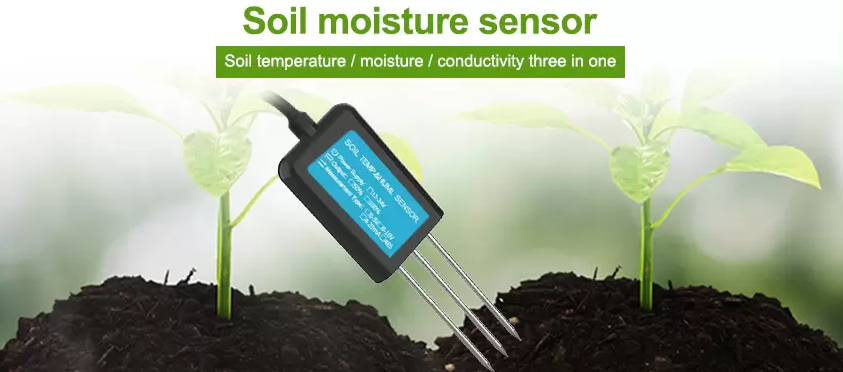Soil moisture is the source of the survival of plants. The moisture content of the soil directly affects the growth quality and speed of crops. In the planting industry, crops cannot directly obtain the inorganic elements in the soil by themselves. The water in the soil acts as a solvent to dissolve these inorganic elements. Therefore, precipitation or irrigation must be converted into soil. Water can be absorbed by plants. During the process of growing of crops, because of the different varieties, the requirements for soil temperature, water content are also different. There are many ways to monitor soil moisture, and the most commonly used method is to measure it through a soil moisture sensor.
FAQs about Soil Moisture Sensor
The most commonly use soil moisture sensors on the market are the tdr soil moisture sensor and fdr soil moisture sensor.
How soil moisture sensors works?

FDR soil moisture sensor working principle
FDR refers to frequency domain reflection, which uses the principle of electromagnetic pulse. According to the frequency of electromagnetic wave propagating in the medium, the soil’s apparent dielectric constant ε is measured to obtain the soil’s volumetric water content θv. The measurement principle, method and application of FDR system in soil water continuous and dynamic monitoring are introduce. The actual measurement results are correct as reference for FDR correction.
TDR soil moisture sensor working principle
TDR refers to time domain reflectance, which is a common principle for quickly detecting soil moisture. The principle is that the waveform on a mismatched transmission line will reflect. The waveform at any point on the transmission line is the superposition of the original waveform and the reflected waveform. The response time of TDR principle equipment is about 10-20 seconds, which is suitable for mobile measurement and fixed-point monitoring.
More soil moisture sensors description
What is the output of soil moisture sensor?
- The probe is powered by a 4.5~30V DC power supply, and the output signal is a standard RS485modbus protocol.
- The probe is powered by a 10~30V DC power supply, and the output signal can be 4-20ma, 0-5v, 0-10v.
- The probe is powered by a DC 3.6V lithium battery and can output wirelessly.
How to calibrate a soil moisture sensor
The most reliable way to calibrate any type of sensor is to compare it to an instrument known to perform well under actual humidity conditions. Relative humidity in the range of 50 to 90% is usually found between noon and midnight in summer, in the high mixing range use another method. When the temperature rises to 32 ° C, the relative humidity reduce to 30%.
The best humidity reference instruments are psychrometer and dew point meter. The dew point meter has a precisely calibrated thermometer, which is an accurate measurement of air temperature, so it will give a reliable humidity value.
6. Which soil moisture sensor is best?
At present, there are many soil moisture measurement methods on the market, and there are different soil moisture sensors. For example: Time Domain Reflectometry (TDR), Plaster Method, Infrared Remote Sensing Method, Frequency Domain Reflectance Method/Frequency Domain Method (FDR/FD Method), Titration Method, Capacitance Method, Resistance Method, Microwave Method, Neutron Method, Karl Fischer Method, Y-ray method and nuclear magnetic resonance method. The fdr soil moisture sensors and tdr soil moisture sensors are the two most widely used soil sensors with the best accuracy.
